By: debbie lynn elias
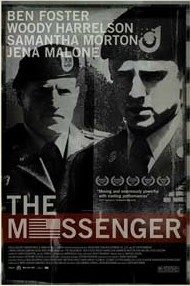
In light of the recent incident at Ft. Hood and given that I sit and write my feature review week on Veterans Day, it is impossible for me to not showcase one of the most powerful and moving films of our time, Oren Moverman’s THE MESSENGER. 
Casualty Notification Officer. The very phrase brings dread to anyone in or anyone with a family member in the military, for it is the CNO that is charged with the duty of personally notifying you that a loved one has been lost in the line of battle. Over the years, casualty notification has changed. There was a time it was done by telegram with officers delivering the news. In Viet Nam, with the first cavalry attack and the massive losses suffered by US troops, the military was so overwhelmed with casualty notification in Ft. Benning, Georgia that telegrams notifying next of kin were, in fact, delivered by local cab companies. It has now long since been mandated in all branches of the service that casualty notification is done in person. While injuries may be reported telephonically, death notification is done in person. According to Col. David Smith, former command chaplain for the U.S. Army Southern European Task Force, death notifications are always delivered to the next of kin in person by a team of at least two soldiers who are “trained in notification procedures and grief and bereavement” with notification being provided between 6:00 a.m. and 10:00 p.m. and within four hours of notification to the CNO of the death.
The task is one of the utmost solemnity and has priority over all other duties. According to the Casualty Notification Guide issued by the U.S. Army: CNO’s “will wear the Class A uniform and present a soldierly appearance when making notification. . .Learn as much as you can about the casualty, the NOK, and the circumstances surrounding the incident…Have on hand the name and telephone number of the local hospital, local ambulance service and fire department rescue squad… Do not extend overly sympathetic gestures that may be taken the wrong way. Use good judgment by not passing gory or embarrassing details…Do not physically touch the NOK in any manner unless there is shock or fainting. Summon medical assistance immediately, if necessary.” The procedure is methodical and mechanical meant to impart no emotion on the part of the military or the CNOs.
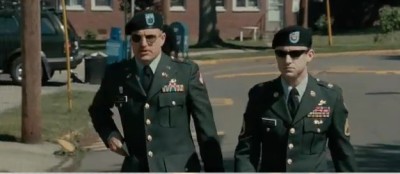
Captain Tony Stone is a hard ass soldier. An Army lifer. Unemotional. By the book. A prideful man with a volatile temper. A recovering alcoholic, his past demons regularly haunt him. A long time CNO on the base on which he is stationed (which, for purposes of this film, just happens to be Fort Dix, New Jersey.), he soon finds himself partnered with Staff Sergeant Will Montgomery. Injured in the line of duty taking some sniper fire in Iraq while saving a brother in arms, an act for which he was decorated for heroism, Montgomery is unable to return to duty due to his eye injury. Adding insult to injury, Montgomery’s stateside return is marred by the loss of his girlfriend who decided to become engaged to another while Montgomery was overseas. With three months left on his Army contract, Montgomery is assigned to be a Casualty Notification Officer. Partnered with Captain Stone, he is handed his CNO guidebook (printed copies are available on the internet for those interested) and instructed to watch the requisite companion videos describing the precise manner and method of casualty notification.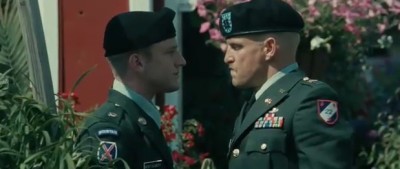
Within hours of his appointment, Montgomery is summoned to duty by Stone and he witnesses his first notification. As comes as no surprise emotions run high and notification is not a smooth process. But for Montgomery, a good soldier, following procedure and showing no emotion is harder than it looks. Suffering the slings and arrows of each relative’s loss, verbal and even physical venom and hatred is assailed at Stone and Montgomery, with one exception – a young woman named Olivia. With unbelievable stoicism and strength, she defies expectations when told of her husband’s death, a characteristic that draws Montgomery into Olivia’s life and her heart.
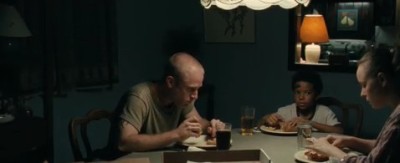
This is THE performance of Woody Harrelson’s career. His intensity is amazing. But it is the emotional depth he brings to Stone and the catharsis we see unfold that is spellbinding. According to Harrelson, as the six casualty notifications in the film progressed, “my imagination latched hold of the reality of the experience. I can’t remember being so deeply affected by a role.” As for Ben Foster, all I can say is WOW! He was amazing. A tacitly dynamic and enthralling psychological portrait of a conflicted decent man. The development of both Will and Tony as characters and the personal, cathartic psychological journey each takes during the course of the film is painfully beautiful to watch. Each with demons. Each with fears. Each different. Yet, strikingly the same. Truly a tour de force performance from Harrelson and Foster, both of which deserve recognition this awards season.
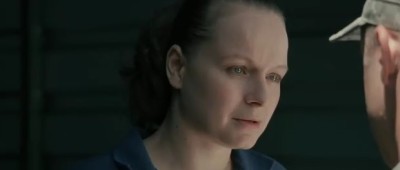
As Olivia, Samantha Morton brings not only a gentle grace, but level of charm and different point of view to the film. A mother with a young child who doesn’t want to air her family’s laundry for the neighborhood to see, yet fully cognizant of the fact that every woman in the military housing knows what is happening with the appearance of two soldiers in Class A dress uniforms. A very touching performance. Adding to the textural complexities of casualty notification are performances by Steve Buscemi, Hailley Feifer and Kevin O’Hagen. Each character is a “next of kin” and each responds differently to notification. Their perspectives and emotions are ones that the public rarely considers when it comes to men and women in military and particularly during wartime and watching each here is riveting. Buscemi, in particular, is raw emotion.
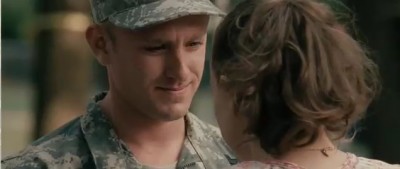
According to Foster and Harrelson, this experience is one they will never forget, particularly their visit to the Walter Reed facility where they interacted with soldiers. For Foster, that visit changed his perspective about life and about this film. Bonding with one critically injured soldier who suffered major head trauma in Iraq as well as the loss of leg and yet to be determined loss of his other leg, as tribute to him, Foster requested his character’s name be changed from that originally written, Derek, to that of Will, the solder he befriended. As to Harrelson, a surprising choice to play a soldier given his personal pro-peace advocacy, the experience “opened my heart to meet these incredible people, these warriors. I developed a profound respect for them.”
A film not about the casualties of war or war, but merely taking place in a wartime setting, writer/director Oren Moverman touches on an aspect of life and the military that few acknowledge let alone address on film – that of casualty notification and those left behind to deal with life after death. Characters are well developed and the relationships between Stone/ Montgomery and Montgomery/ Olivia fully fleshed out, tracking at a believable emotional pace. Supporting characters, with minimal dialogue, carry their scenes with heart wrenching emotion. Production design and attention to detail give us all we need as a visual backstory for each of the six casualty notifications to connect us with the life and loss of each. Tactfully, respectfully and delicately told, the story itself is illuminating to the average public and the average heart. With full cooperation of the U.S. Army, a surprise to Moverman, not only was military advisor Paul Sinor involved in the authenticity of the film, but Iraq war veterans visited the set and even became involved in the filmmaking process.

Cinematographer Bobby Bukowski captures the beauty of South Jersey and the naturalism of the area and the base with a documentary style. Shot in Fort Dix and the surrounding New Jersey communities in the Whiting and Browns Mills areas, and others, all of which are so affected by and reliant on the military, adds even more reality and emotion to the film. I am well familiar with Fort Dix and the South Jersey area and I can’t tell you how many times over the years driving through the residential base housing that I would wonder about the people in the houses, the clothes hanging on the lines, the toys strewn about the yards. THE MESSENGER is closer to life than people realize.
“The Secretary of the Army has asked me to express his deep regret that your (relationship; son, Robert or husband, Edward; etc.) (died/was killed in action) in (country/state) on (date). (State the circumstances provided by the Casualty Area Command.) The Secretary extends his deepest sympathy to you and your family in your tragic loss.”
From the darkness there comes a great light and a great hope. Beautifully heartfelt, THE MESSENGER is seeded with unspoken truth, resulting in a dramatic tour de force film with an enlightening and uplifting script, focusing on the fragility and resiliency of the human condition.
Captain Tony Stone – Woody Harrelson
Staff Sergeant Will Montgomery – Ben Foster
Olivia – Samantha Morton
Directed by Oren Moverman. Written by Oren Moverman and Alessandro Camon.












